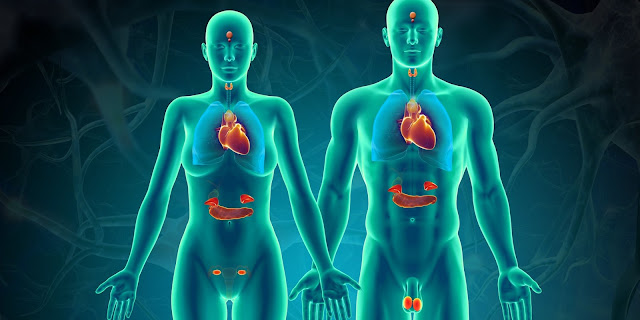Aquaponics: A Sustainable Way of Farming
Aquaponics is an innovative integrated farming system that combines aquaculture (raising aquatic animals such as fish) with hydroponics (growing plants in water). This sustainable farming method allows recycling the waste produced by aquatic animals as nutrients for plants grown hydroponically. By integrating these systems, both plants and animals can be raised together with a minimal environmental footprint. With the growing problems of water scarcity, land shortage, and pollution from conventional agriculture methods, aquaponics offers an eco-friendly alternative for producing food.
What is Aquaponics?
Aquaponics is based on a symbiotic relationship between fish and plants grown
without soil. In a closed aquaponic system, fish waste (in the form of ammonia)
acts as natural fertilizer for plants. The nutrient-rich water from the fish tank
is pumped to grow beds containing hydroponic plants. The plants absorb and use
the nutrients and purify the water, which is then recirculated back to the fish
tank. This establishes a balanced ecosystem where the waste from one species
serves as a food source for another while keeping both the fish and plant
environment clean.
Components of an Aquaponic System
A basic Aquaponic
System consists of three main components - the fish tank, the
hydroponic grow beds, and the sump tank.
Fish Tank
The fish tank houses various fish species that are locally available and
suitable for aquaponics like Tilapia, Prawns, Catla, etc. It provides the
natural habitat for the fish to thrive.
Hydroponic Grow Beds
The grow beds contain hydroponic plants like lettuce, spinach, herbs grown
with their roots suspended in nutrient-rich water from the fish tank but
without soil. Various hydroponic techniques like Nutrient Film, Deep Water
Culture, etc. can be used.
Sump Tank
The sump tank collects water and waste from the fish tank. A pump transfers
this water to the grow beds for the plants to filter and purify it before it
returns to the fish tank, completing the recycling process.
Benefits of Aquaponics
With decreasing land and water resources, aquaponics offers several ecological
and economic advantages over traditional agriculture:
Sustainability
It is a closed-loop system with minimal water usage. Up to 90% of the water
is recycled reducing dependence on freshwater supplies.
High Crop Yields
Higher planting densities are possible as plants receive continuous
nutrient-rich water flow. Yields are around 4-10 times higher than conventional
soil-based farms.
Reduced Pollution
There is no run-off of fertilizers, pesticides or herbicides into
waterways. The system is not dependent on soil quality or climate making it
adaptable to different locations.
Dual Production
Both aquaculture and hydroponic crops can be raised together providing
greater financial returns than raising either activity separately.
All-Year Production
With controlled environment and water temperature regulation, crops can be
produced throughout the year.
Less Susceptible to Disease
Integrating two cultivation methods reduces the risk of catastrophic
failures from single pest or disease outbreaks.
Economic Viability
Returns are high with less setting up and operational costs compared to
traditional agriculture over long run. Produce can be sold at premium prices.
Challenges and Future Prospects
While aquaponics has gained popularity among small farms and homesteads, a few
challenges currently limit its large-scale commercial adoption:
Higher Initial Investment
Setting up integrated systems with precise equipment, plumbing and
electricity requires higher capital costs than traditional farming methods.
Technical Know-How
Maintenance of optimal water quality factors like pH, dissolved oxygen,
nutrients requires technical skills that small farmers may lack. Commercial
scale-up also needs research support.
Fish Species Selection
Selecting suitable fast-growing fish species tolerant to crowded culture
conditions is important but limited currently.
Post-Harvest Infrastructure
Lack of cold storage, transportation and marketing infrastructure hinders
producing aquaponics for mass markets in developing countries.
However, with ongoing research and development optimizing designs, automation
and remote monitoring, aquaponics holds much promise to emerge as a major
sustainable food production system globally in the coming decades - able to
supplement conventional agriculture and play a key role in addressing future
food and water security challenges. Scientific advancements increasing crop
yields per unit area and resource use efficiency will make large-scale
aquaponic farms commercially viable. When integrated with urban greening
initiatives, it can additionally help combat issues like rising temperatures in
cities from climate change. Sustained efforts are needed to strengthen the
aquaponics industry, scale models suited to different geographies, and achieve
its full potential.
In conclusion, aquaponics presents an eco-friendly integrated solution for
agricultural needs evolving with the times by maximizing resource reuse while
minimizing environmental impacts. Although commercialization requires
overcoming certain bottlenecks currently, widespread adoption of this
sustainable farming method could go a long way towards transitioning to a
circular bioeconomy with optimized food and nutrient production.
Get more insights on Aquaponics




Comments
Post a Comment